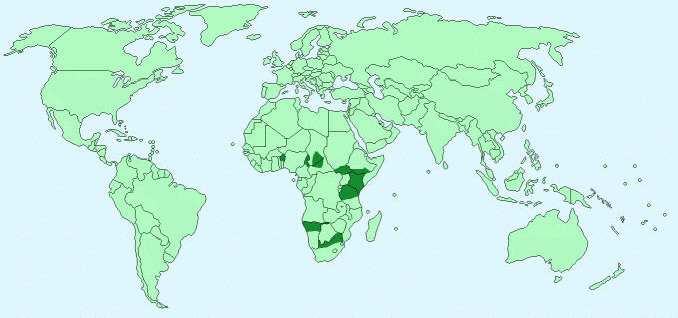Giraffe

Scientific Name – Giraffa Camelopardalis
Classification – Ungulate
Gender Names – Male – Bull; Female – Cow; Baby – Calf
Collective Noun – Tower
Average Height – Males – 5 – 6 m (16 – 20 ft); Females – 4 – 5 metres (12 – 16 ft)
Average Weight – Males – 1200 kg (2600 lbs); Females – 800 kg (1800 lbs)
Top Speed – 51.4 km/h (32mph)
Life Expectancy – 20 – 25 years in the wild, up to 30 years in captivity
Mating Season – No specific time
Pregnancy – 14 – 15 Months
Special Features – A long neck up to 2 metres (6 ft) long used to reach the tops of trees. A long tongue (up to 55 cm, 22 in) is used to strip leaves from the trees. Although they may look the same, each giraffe has a unique pattern on its body.
Family Unit – Flexible social structure with groups of up to 20 individuals coming together especially where there is a good food source.
Geographical Distribution – Southern and central Africa
World Population – 110,000 – 150,000
Conservation Status – Low risk
Natural Habitat – Savanna plains, grasslands, open woodland
Diet – Herbivore (vegetarian) – leaves and shoots from trees and shrubs, especially Acacia
Predators – Adults – man; Babies – lions, hyenas, leopards, African wild dogs
Harvard Reference for this page:
Heather Y Wheeler. (2015). Giraffe. Available: https://www.naturalhistoryonthenet.com/Mammals/giraffe.htm. Last accessedMonday, July 18, 2016
Mammals Pages
Features
Classification
Mammals A – Z
